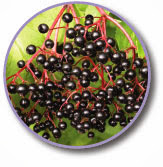Concerns have been rising over the use of plastics containing bisphenol-A (or BPA). BPA is an industrial chemical that has been used for over 40 years in the manufacture of many types of plastic food containers and the linings of metal cans designed to contain foods and beverages. It has the potential to leach into the foods or beverages from the containers that hold them. This is problematic since BPA is known to be an endocrine disruptor, which means it has the ability to mimic the body’s hormones. In some studies, exposure to BPA in plastic bottles has been shown to increase risk for cancer, heart disease, diabetes, obesity, and other problems.
A recent study published in The Journal of the American Medical Association showed that individuals who consumed one serving of canned food every day for five days had significantly increased levels of BPA. This study was the first of its kind to measure the amounts of BPA ingested when food is consumed directly from a can. Harvard researchers noted a spike in BPA levels higher than in any other study. Dr. Karin Michels, an associate professor at Harvard Medical School and an author of the study noted, “We would have never expected a thousand-percent increase in their levels of BPA.”
In the study, 75 staff members and students at the Harvard School of Public Health were split into two groups and followed for two weeks. During week one, the first group ate a 12-ounce serving of canned vegetarian soup daily for five days. The second group also ate a daily 12-ounce serving of vegetarian soup for five days, but their soup was prepared from fresh ingredients each day. After a two-day period of both groups being soup-free, the groups switched roles and repeated the experiment for another five days. Urine samples were taken from individuals at the end of each five-day period to measure levels of BPA.
The Harvard researchers in this study found that the group consuming the freshly-prepared soup had urine levels of BPA similar to average adults in most studies (about 2 micrograms per liter). But after this group switched to eating the canned soup, levels increased well over one thousand percent (20+ micrograms per liter)! Dr. Michels pointed out that participants were given amounts of soup probably smaller than what most of them would eat on their own. “They were actually telling us that that wasn’t even enough for their lunch.”
Researchers of the study do not know what kinds of health effects may be related to such dramatic increases in BPA levels, but they have suggested that the findings of their study most likely apply to other canned products like sodas and juices. Sodas are especially concerning since some people consume many of them during the day.
Although efforts have been made by some companies to discontinue the use of BPA in their products for safety purposes, the chemical is still being frequently utilized in a wide array of products.
The modern world we live in offers us many conveniences, including foods that are processed and do not require much preparation-canned foods, packaged foods, frozen foods, etc. But with convenience there may be a price to pay, our health. Although we may want utilize these types of conveniences on occasion or when necessary, optimal health is best achieved through a diet rich in whole unprocessed foods.
Dr. Shana McQueen








